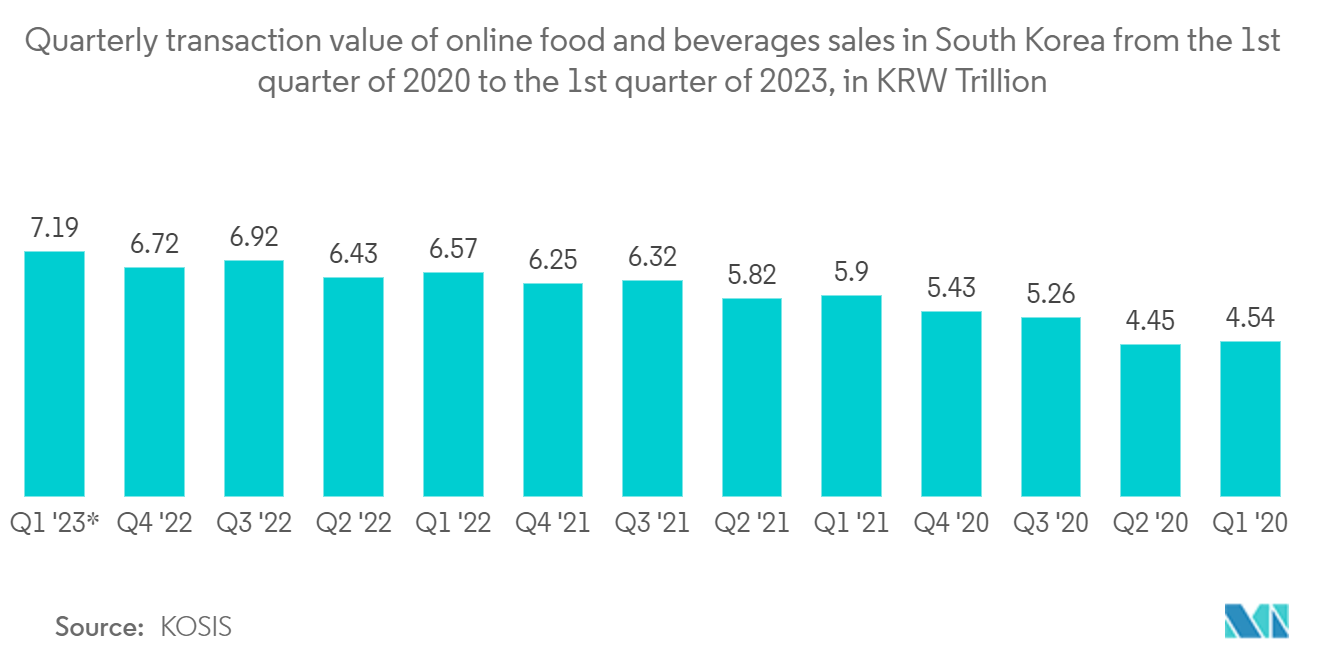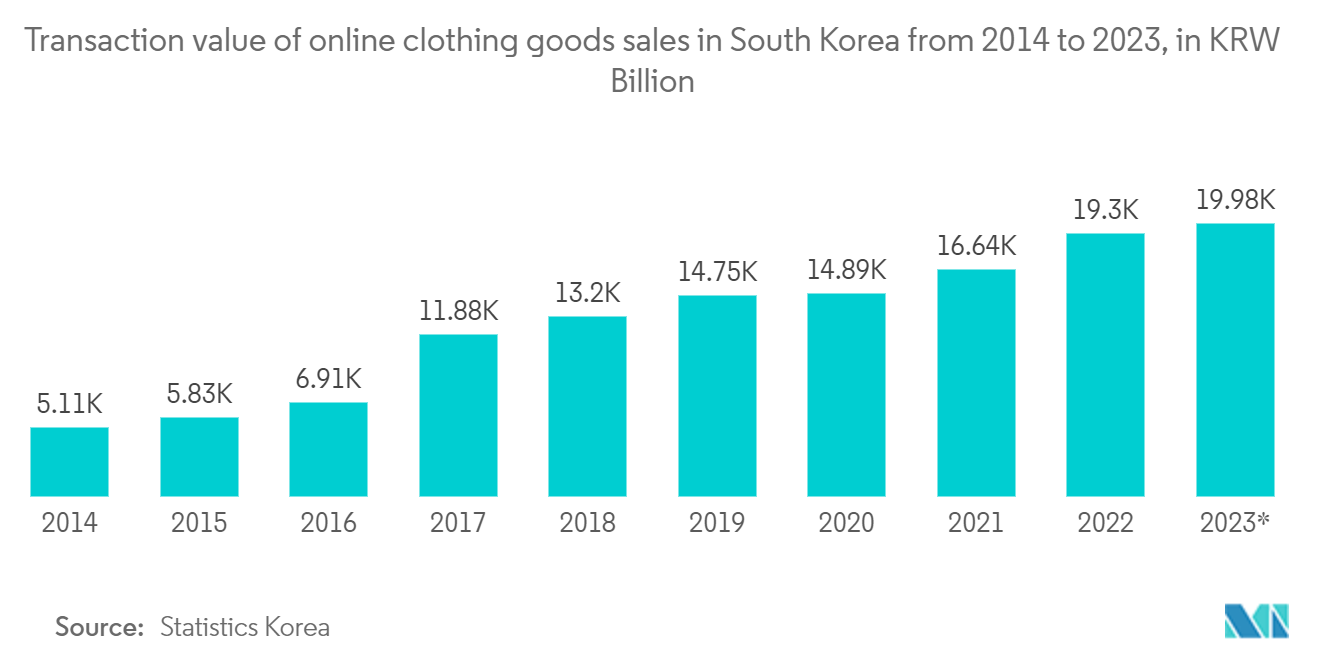Market Trends of South Korea E-commerce Industry
Food and Beverage Sector to Hold Significant Market Share
- Food and beverage e-commerce has benefited from the growing demand for online grocery shopping behavior changes in terms of food consumption, which were greatly influenced by reduced outdoor activities such as work from home and remote learning, supporting further strong growth for food and drink e-commerce, supported the growth of e-commerce platforms in the country.
- The transformation toward higher-density urban living in the country has led from communal dining to meal kits and on-the-go eating options. As convenience becomes a priority, meal kits with easy-to-follow recipes are increasingly popular, supporting the demand for packaged food and driving the growth of the e-commerce market in the country. Additionally, South Korean consumers are also taking note of the trend for healthier food options. Increasingly, consumers pay more attention to the quality, nutritional value, and sourcing of the food they consume, presenting opportunities for high-quality, ethically sourced, healthier food options. Further, South Koreans, having grown up with a distinctive and unique food culture, are traveling more and are developing an increased taste for international food and beverage products, supporting the e-commerce platform usage for food and beverages in the country during the forecast period.
- Furthermore, according to the Korean Statistical Information Service (KOSIS), the transaction value of online food and beverage purchases was roughly KRW 7.19 trillion (approximately USD 5.3 billion) in the first quarter of 2023, an increase in sales from the previous quarter, Q4 2022. Over the years, the transaction value has gradually grown. Such a significant transaction value is expected to considerably contribute to e-commerce growth in the country.
- The market has witnessed a significant increase in the internet channel's nationwide percentage of fresh food purchases. However, as consumers' meal preferences have evolved, they increasingly seek out different cuisines as substitutes for Korean-style recipes, buying fresh components such as imported meat and Western veggies or meal packages in small quantities. Such trends are considerably contributing to online food deliveries across various food chains, thereby driving e-commerce sales in the country.
- The accessibility of online grocery shopping is expected to retain current customers, as many of them have grown accustomed to having large grocery items brought to their homes. The growing number of single-person and dual-income households, which fueled the channel's growth before the pandemic, is expected to continue to be the primary driver. At the same time, the influx of new customers, such as older adults, is anticipated to accelerate the rapid growth of food and drink e-commerce over the forecast period.

Fashion and Apparel Sector to Register Significant Growth
- South Korea is now regarded as one of the East's most significant emerging fashion capitals, with Seoul Fashion Week becoming increasingly famous. Saturation in the West has caused many businesses to change their emphasis and seek out emerging markets, which is expected to develop the fashion and apparel industries in the country, thereby supporting market growth.
- Additionally, South Korea has an economically expanding fashion industry, with several local names accounting for a sizable portion of total fashion sales. Aside from that, Seoul has a powerful impact on street style, particularly among the younger groups.
- South Korea has its own set of patterns and retail and online players. Although there is a strong preference for Western luxury goods, customers in the nation have individual preferences for them. As a result, the strategy for reaching these consumers must be completely tailored to their preferences. South Koreans use a variety of social media applications, both prominent Western and local, which is expected to account for e-commerce revenue generation considerably.
- Additionally, local celebrities and pop icons also have a big influence on South Koreans. Moreover, many Western companies use these personalities as brand ambassadors. Their distinct style can influence public opinion and set significant national developments. These trends could potentially attract large players to invest in fashion e-commerce activities to enhance their offerings across the country.
- Consumer demands in the fashion market are becoming increasingly complicated and varied due to increased consumption and rising disposable incomes. Other factors include the growing desire for individuality and personalized fashion, the growth of life-enriching consumption such as leisure and cultural activities, an increase in internet sales, an aging population, and a change in core consumers. Such trends are expected to significantly increase e-commerce sales in the fashion industry.


